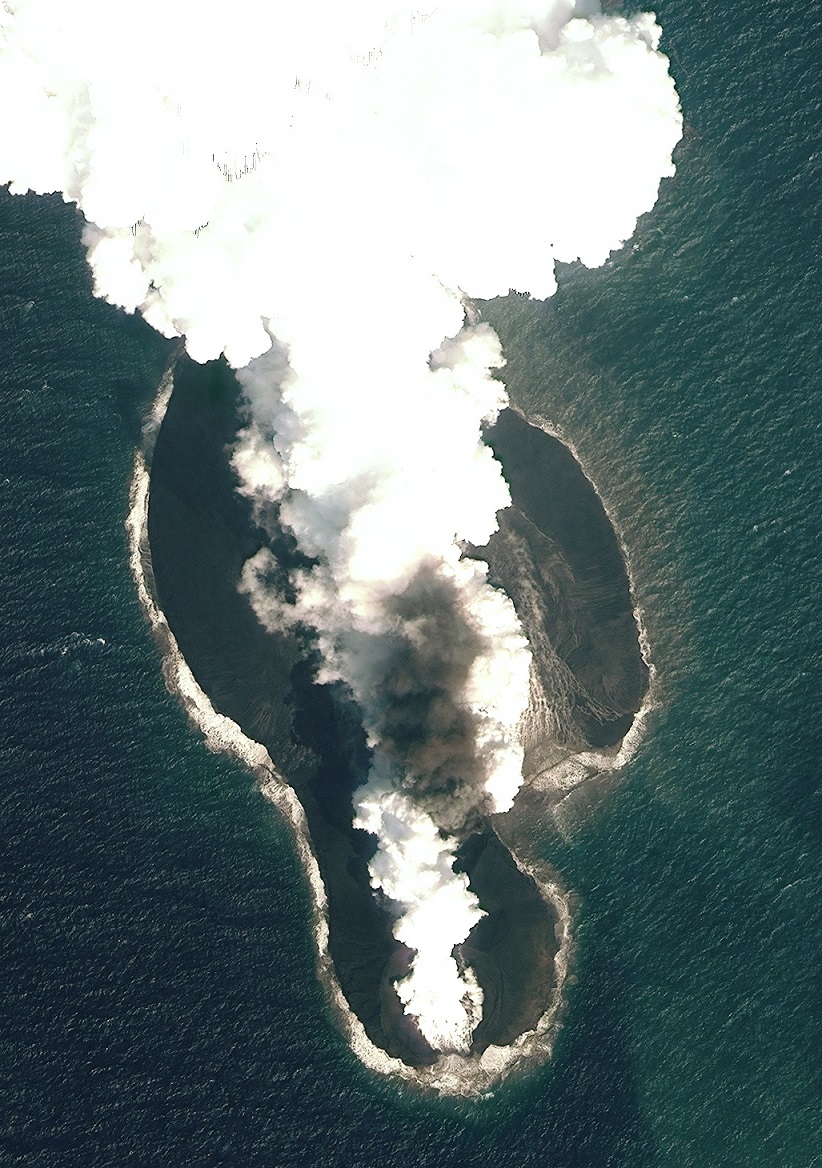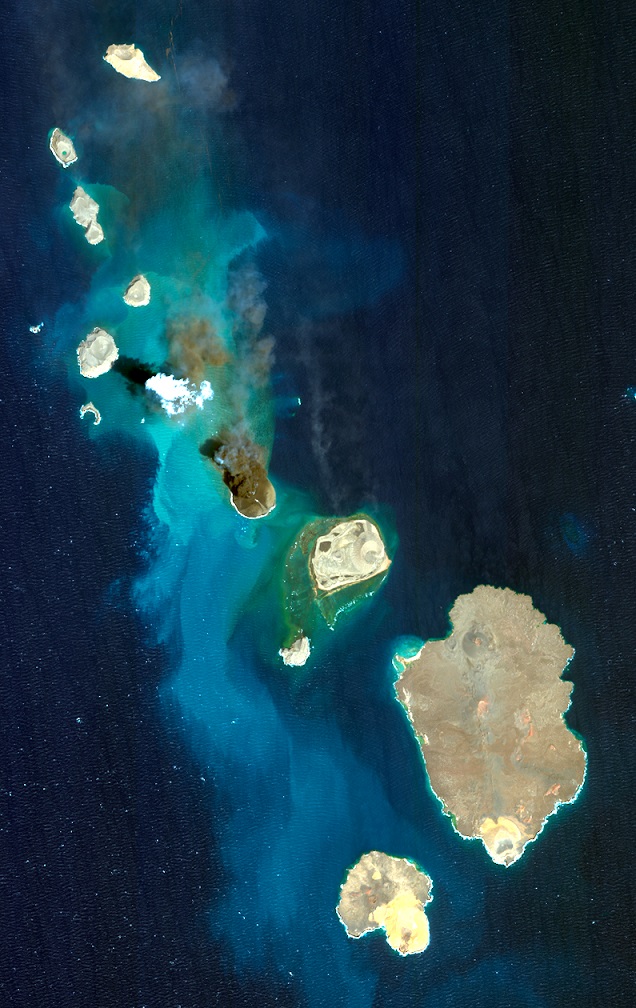
Both islands emerged in the Zubair Archipelago, a small chain of volcanic islands, owned by Yemen, that rise from the Red Sea between Africa and the Arabian Peninsula. The first of the new islands, now called Sholan Island, appeared in December 2011. The second island, called Jadid, surfaced in September 2013.
The Red Sea is an enormous crack in the Earth's crust called a rift, where the African and Arabian tectonic plates are tearing apart at about 0.4 inches (1 centimeter) per year. At a rift, the crust stretches apart slowly over centuries, like a piece of taffy candy, but it also sometimes suddenly splits when the strain becomes too great. For instance, in 2005, in nearby Afar, Ethiopia, giant fissures and fiery lava flows appeared in the rift zone after a series of earthquakes.
The new volcanic activity that formed these islands in the Red Sea could herald a rifting episode akin to that seen in Afar, said study co-author Sigurjón Jónsson, a geophysicist at the King Abdullah University of Science and Technology in Thuwal, Saudi Arabia.
"The segment of the plate boundary that goes on land in Afar has been looked at as the main boundary, but this new activity tells us the other branch in the Red Sea is still quite active," Jónsson told Live Science. "We will have to follow it in the years to come and see how it continues."
The chain of volcanic islands in the Zubair Archipelago marks another branch of the same rift zone, one that has been quiet for nearly 150 years. (Yemen's Jabal al-Tair Island erupted in 2007, killing several people at a naval base.)
The two eruptions in the Red Sea were heralded by swarms of small earthquakes triggered by magma squeezing through long, narrow cracks in the Earth's crust. The magma-filled cracks are called dykes, and are at least 6 miles (10 kilometers) long, the researchers reported Tuesday (May 26) in the journal Nature Communications. The islands are both less than 0.6 miles (1 km) wide.
Researchers Wenbin Xu and Joël Ruch, also of King Abdullah University, estimated the size of the dykes by measuring small changes in surface height as shown by satellite images snapped before and after the eruptions.

Similar earthquake swarms have rattled the region for years, the researchers noted. The seismic shaking could mean that magma had been tunneling underground for up to a decade before the volcanic islands appeared, the researchers said.
"We may not be over this period of heightened activity," Jónsson said. "If you look at all these swarms, we think the area was undergoing a rifting episode for a period of several years or more."
The new islands are far from towns and villages, and are unlikely to disrupt air traffic with large ash explosions, Jónsson said. Ships traversing the Gulf of Suez could also easily divert around the islands, he said.



Reader Comments